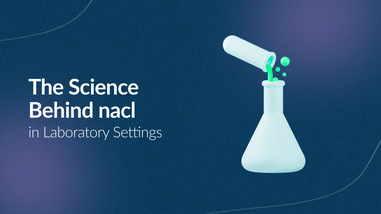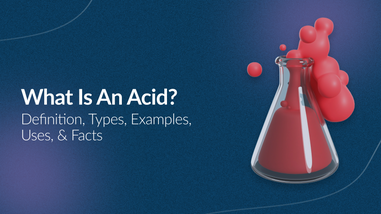- No products in the cart.
Did you know? 3 out of 5 laboratories face a chemical-related accident each week. From spills, slips to dangerous chemical exposure you can never be too safe with chemicals. This is why it is your duty as a lab manager/supervisor to ensure that everyone take necessary measures to maintain lab safety with chemicals.
To start, it is important to note that there are specific federal, state, and municipal regulations that may include specific requirements for storing and handling chemicals in a laboratories.
These laws evolve and change over time. Implementing an annual process review will ensure your overall laboratory safety stays up to date.
Here are some handful of tips that can help lab managers promote lab safety when working with chemicals:
1. Follow the Standard Operating Procedures (SOP) and Processes
Always read through the set of instructions or requirements that come with a new chemical. This ensures that you know the proper methods that entail to using it. Plus, it allows you to have a better understanding of the chemical experiments that won’t work with a certain substance.
Chemical Safety Data Sheets (SDS) and information should be readily available and distributed to anyone who is working with chemicals in the lab. Certain chemicals will also require special instructions and training to assure proper handling. There should be a SDS for every for every chemical product.
One way to navigate through this tricky situation is by creating a Standard Operating Procedure (SOP). Think of it as a comprehensive code of conduct that ensures lab safety with chemicals. With a thorough SOP at hand, lab technicians reduce the risk of mishandling with chemicals.
Pro-tip: Have SOP-s and SDS-s in a designated location. Place flip charts, signs and posters in and around the lab to remind workers of important chemical hazards and risks.

2. Personal Protective Equipment (PPE)
The focus of this blog is Lab Safety with chemicals but before we start Working with chemicals, we need to ensure that we ahev the proper PPE.
At a minimum this includes:
-
Wearing safety goggles when you work with flammable substances, acids, and bases.
-
Donning laboratory coats at all time to protect your clothes and skin from spills.
-
Using gloves when dealing with chemicals to avoid any skin contact
-
Opting for thick/water-proof boots if necessary to protect your feet
In addition, personal hygiene is essential in the laboratory. You must always wash your hands before and after a chemical experiment. This helps wash off any leftover residue that might cling to your skin.
Pro-tip: Consult the Standard System for the Identification of the Hazards of Materials for Emergency Response for guidance (1). Another great resource is the OSHA’s Hazard Communication Standard (2).
3. Chemical Storage
-
Chemical Storage in a laboratory requires careful consideration and procedures. Here are some rules to follow when storing chemicals:
-
Chemicals must be labelled and stored in accordance with the instructions on the SDS
-
Chemicals must be separated in accordance to the compatible groups. Follow all precautions regarding storage of incompatible materials.
-
Chemical compatibility chart must be posted for reference next to chemical storage rooms and in the lab.
-
Do not Store large or heavy containers on high cabinets and shelves. Instead store these at shoulder level or below.
-
Store flammable liquids in approved flammable area or liquid storage cabinets.. Check with your local municipal authority (fire marshal, EH&S personnel) for allowable limits.
-
Store volatile odoriferous and toxic chemicals in ventilated cabinets. Please check with your local municipal authority environmental health and safety personnel for specific guidance.
-
Do not store acids and alkalis together. Please check with your environmental health and safety personnel for specific guidance.
-
Do not store strong acids and organic substances together. Please check with your environmental health and safety personnel for specific guidance.
-
Do not store strongly oxidising substances together with oxidisable substances. Please check with your environmental health and safety personnel for specific guidance.
-
Ethers and other peroxide-building substances must be stored in the dark and cool, in tightly sealed containers. Please check with your environmental health and safety personnel for specific guidance.
-
Containers should be sealed tightly to prevent the escape of vapors
4. Labelling
-
Labelling should always indicate what substance the packaging contains and what risks there may be
-
Labelling must be in accordance with the original packaging
-
Always check expiry
-
Keep track of lot numbers
-
Chemicals must be labelled and stored in accordance with the instructions on the SDS
5. Clean and Tidy Surfaces
Keep floors and work surfaces clean and dry at all times. This helps prevents any falls or injuries due to wet surfaces. Moreover, it’s a good idea to ask workers to keep their workstations free from clutter. Doing so decreases the likelihood of spills and mishaps caused by overcrowded and confused work spaces.
Pro-tip: What should you clean chemicals with? You must use absorbent mat pads and wipes to clean the chemical spills and bio-friendly detergents to scrub off stains.
6. In Case of Spills
How should you respond to a spill?
You should train them to contain the spill effectively and teach them how to minimize the hazard. Locate and have close at hand a comprehensive spill kit with appropriate neutralizing agents, cleanup materials, absorbent materials, and waste containers. Other spill prevention strategies include proper ventilation and on-site medical assistance.
Pro-tip: Tell lab members to notify local authorities of a spill immediately. Then assess the situation to decide if an evacuation is necessary.
Use the checklist and guidelines above to get you started to operating a safe and efficient laboratory. You must be always be attentive when working with chemicals. More importantly, abide by the proper handling procedures to minimize chemical accidents and spills.
References:
-
Standard System for the Identification of the Hazards of Materials for Emergency Response, National Fire Protection Association, Publication 704. http://www.nfpa.org/aboutthecodes/AboutTheCodes.asp?DocNum=704
-
OSHA Hazard Communication Standard - http://www.osha.gov/pls/oshaweb/owadisp.show_document?p_table=STANDARDS&p_id=10099
For over 40 years, Lab Pro has been committed to delivering a complete laboratory solution by offering the highest quality products, chemicals, reagents, microscopes and imaging equipment for our customers worldwide. Come visit the biggest Lab Supply showroom in the Bay Area, or contact us online or at 888-452-2776 to help promote safety in your lab.












































